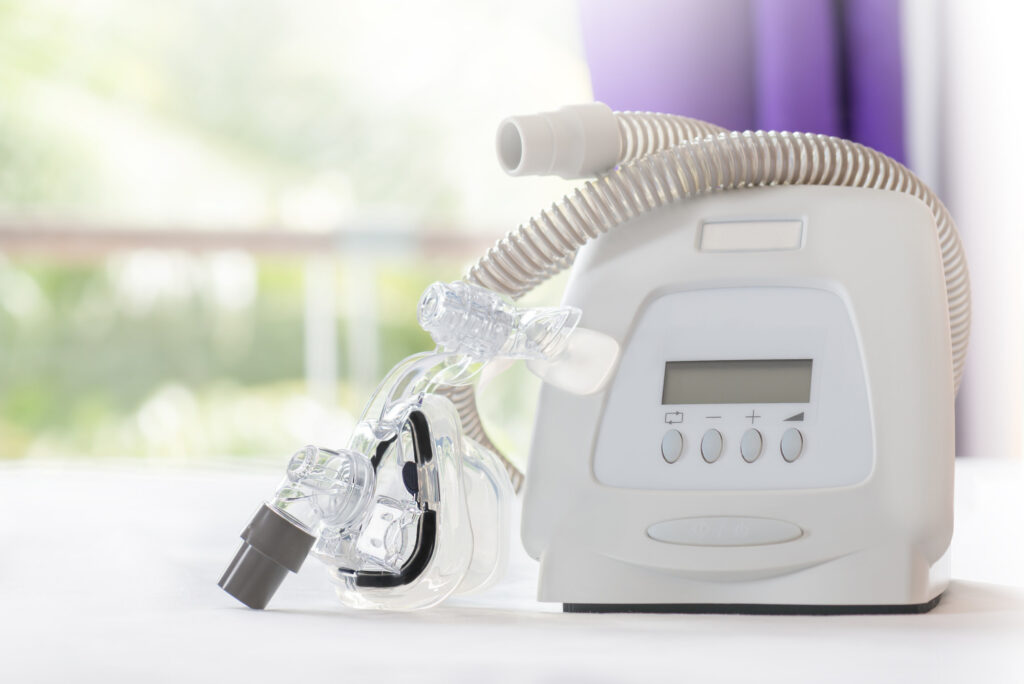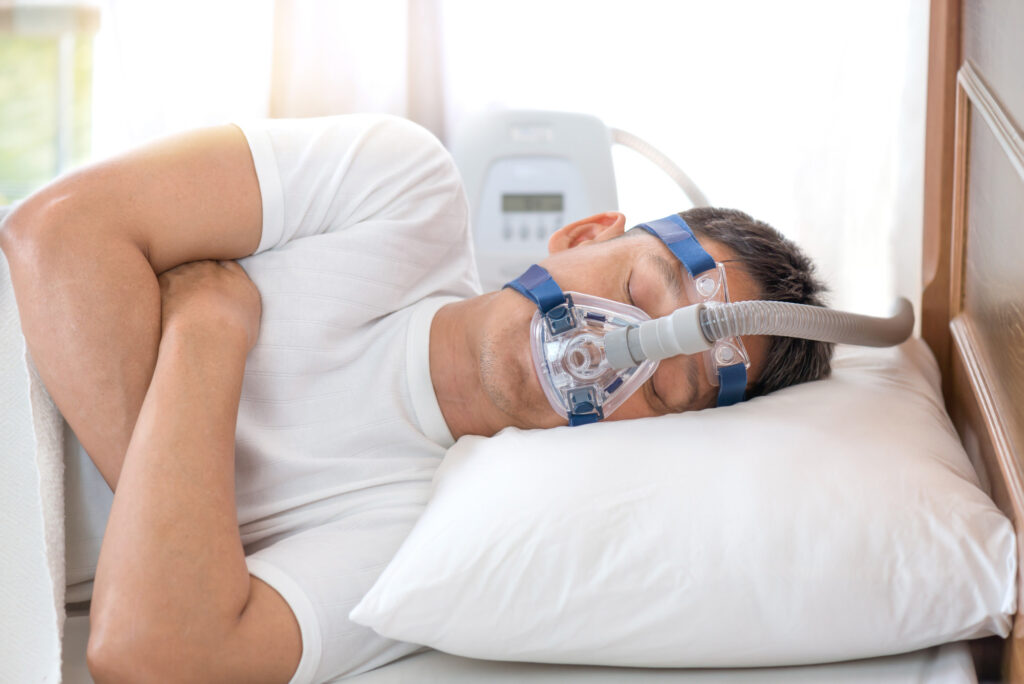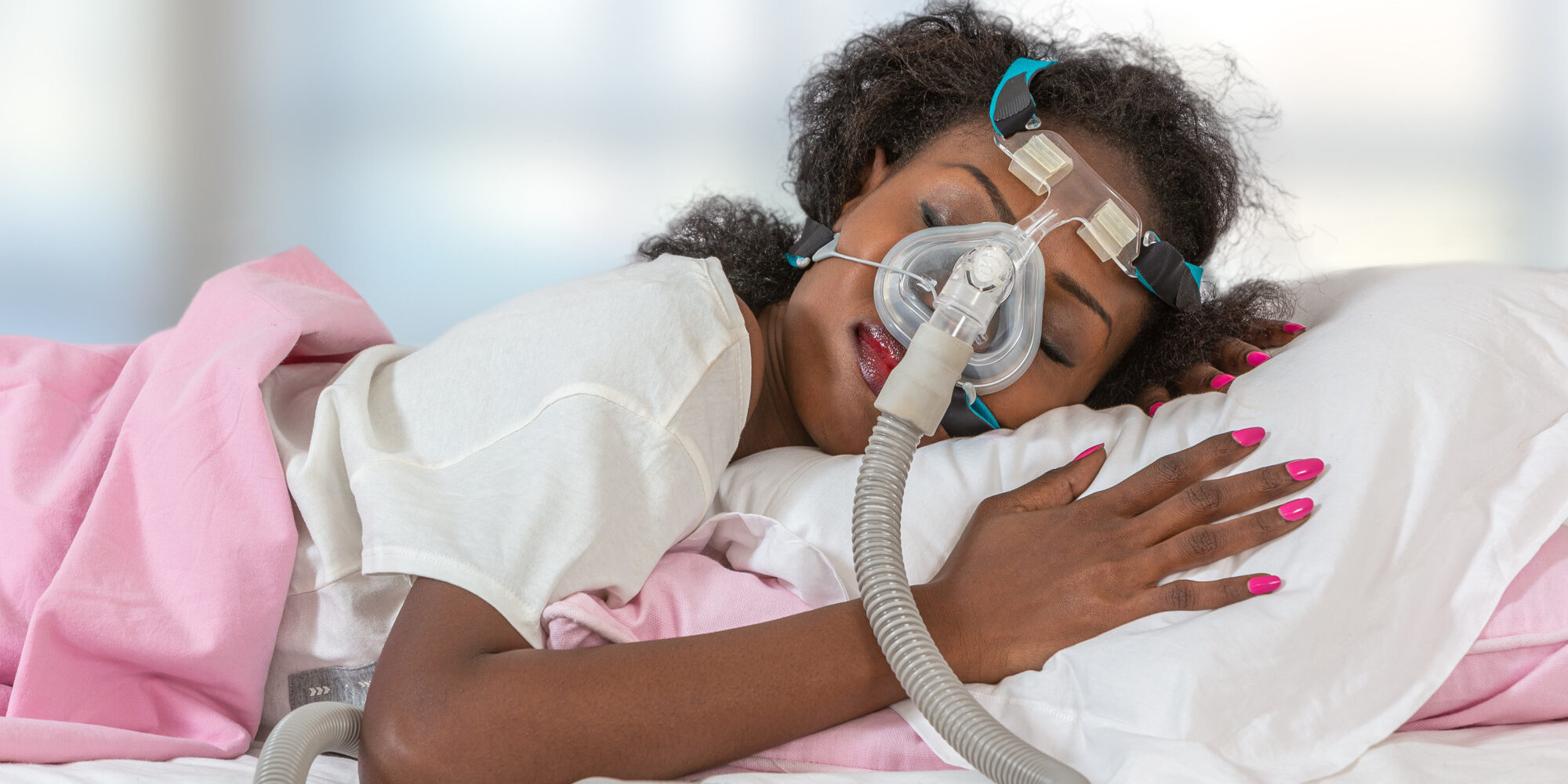A patient with untreated obstructive sleep apnea has about two to three times greater risk of heart disease. i Of course, when treated, the prevalence of heart disease should logically decrease. BUT – this may not be the case.
A study published in eBioMedicine analyzed people with obstructive sleep apnea, with the resulting data suggesting that high CPAP pressures may explain why the machines do not lower the risk of heart disease.ii “CPAP machines are extremely effective in treating obstructive sleep apnea and are great for improving sleep and reducing daytime fatigue, but we haven’t seen a reduction in heart disease that we expected, and we haven’t understood why,” says Sanja Jelic, MD, a critical care medicine specialist and sleep researcher at Columbia University Vagelos College of Physicians and Surgeons, in a release.

In obstructive sleep apnea, the recurrent drops in oxygen levels, which lead to increased inflammation, is thought to cause the higher heart disease risk. Because CPAP restores normal breathing during sleep by applying positive pressure during exhalation (and in some systems, during inhalation), the use of positive pressure to keep the upper airway open has lead researchers believed that CPAP would also reduce a patient’s risk of heart disease.
Studies conducted by Jelic and Daniel Gottlieb, MD, a collaborator at Brigham & Women’s Hospital, proposed a problem with this hypothesis. In studies designed to understand CPAP’s effect on the body, they found that levels of a pro-inflammatory factor, angiopoietin-2 (Ang2), does not decline with CPAP use.iii Additionally, high levels of Ang2 have been linked in previous studies to a higher risk of stroke, coronary artery disease, vascular disease, and mortality.iv
“It was a surprise. We naturally expected that if you removed the intermittent hypoxia with CPAP, Ang2 release would stop, but in fact, it got worse,” Jelic says in a release. To Jelic, the pattern of Ang2 and other biomarkers in CPAP users resembled that of patients on high-pressure ventilators, and she hypothesized that high CPAP pressures may explain why the expected drop in heart disease didn’t materialize.
Jelic and Gottlieb analyzed prior studies using stored blood samples for Ang2 and other markers of inflammation and compared those numbers to CPAP adherence, median CPAP pressure, and the patients’ heart health a year later. Their analysis showed that Ang2 levels remained elevated in CPAP users, confirming Jelic’s previous findings in smaller studies, and that high Ang2 levels were associated with a greater risk of cardiovascular disease 12 months into the study. The patients with the highest Ang2 levels were those using higher CPAP pressures.

CPAP patients use pressures ranging from 4 to 20 cm H2O with median pressures varying within that range. In the study, participants with median CPAP pressure between 4 and 7 had fewer cardiovascular events compared to participants using pressures of 8 or higher. No relationship was found between Ang2 levels and the number of hours the CPAP was in use during the night. “This suggests to us that there’s something in the lungs responding to CPAP pressure that perpetuates rather than reduces the inflammation associated with obstructive sleep apnea,” says Jelic.
CPAP expands the lung, and Jelic theorizes that stretched endothelial cells in the lung release extra Ang2. Since it is not yet possible to directly measure Ang2 release from human endothelial cells, Jelic’s assumption can only conclude as speculation – although, when other tissues are stretched in laboratory tests, Ang2 release from endothelial cells increases sharply.v
Jelic and others have taken precautionary methods in their treatment of obstructive sleep apnea by generally prescribing lower pressures. “We do a careful titration to see which pressures will eliminate most of the obstructive events, and it’s working just fine.”
Currently, most physicians adjust CPAP pressures to eliminate all obstructive episodes during sleep. But Jelic says that lower pressures may reduce Ang2 and produce the same sleep and fatigue improvements, even if some obstructive episodes break through.
References
i Obstructive Sleep Apnea and Cardiovascular Disease: A Scientific Statement From the American Heart Association. Yerem Yeghiazarians, et. al., Circulation, Volume 144, Number 3.
ii CPAP may promote an endothelial inflammatory milieu in sleep apnoea after coronary revascularization. Peker, Yuksel et al., eBioMedicine, Volume 101, 105015
iii ibid
iv Akwii RG, Sajib MS, Zahra FT, Mikelis CM. Role of Angiopoietin-2 in Vascular Physiology and Pathophysiology. Cells. 2019 May 17;8(5):471.
v Davis S., Aldrich T.H., Jones P.F., Acheson A., Compton D.L., Jain V., Ryan T.E., Bruno J., Radziejewski C., Maisonpierre P.C., et al. Isolation of angiopoietin-1, a ligand for the TIE2 receptor, by secretion-trap expression cloning. Cell. 1996;87:1161–1169.








